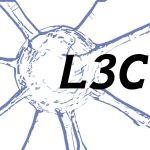Intelligent Techniques for 3D Seismic Data Inversion and Integration (UFSC/FEESC/Petrobras)
Description: The objective of this project is to study, implement and evaluate a neural model capable of performing the acoustic inversion in 3D aiming at the generation of the compressional wave impedance from a reference seismogram. A number of Artificial Intelligence techniques and tools have been extensively researched, described and proposed to be applied to the seismic inversion problem. Among them, we can mention: the Bayesian methodology of seismic inversion (Loures & Moraes, 1999), (Loures & Moraes, 2001), (Gunning & Glinsky, 2004); Genetic Algorithms have also been applied to the seismic inversion problem (Stoffa & Sen, 1991), (Medeiros, 2005). There are also a number of articles showing that Artificial Neural Networks can be used for the inversion of seismic data (Santos, 2008), (Röth & Tarantola, 1992), (Calderón-Macias (Nunnari, Bertucco, & Ferrucci, , Sen, and Stoffa, 1997), (Calderón-Macías, Sen, & Stoffa, 1998), (Calderón-Macías, Sen, & Stoffa, 2000). Special attention will be given to the question of the extension of the model for the integration of seismic data in 3D, seeking the maintenance of the vertical and horizontal correlation of the attributes obtained .
Status: Completed.
Nature: Research.
Students involved: Undergraduate: (2) / Academic Masters: (3).
Members: Mauro Roisenberg – Coordinator / Cassio Rodrigo Conti – Member / Márcio Valério Weck Pereira – Integrante / Fernando Bordignon – Member / Leandro Passos de Figueiredo – Member / Rodrigo Exterkotter – Member / Gláucia de Padua da Silva – Member.
Financier(s): Leopoldo Américo Miguêz de Mello Research and Development Center – Cooperation.
Years: 2011-2012.






